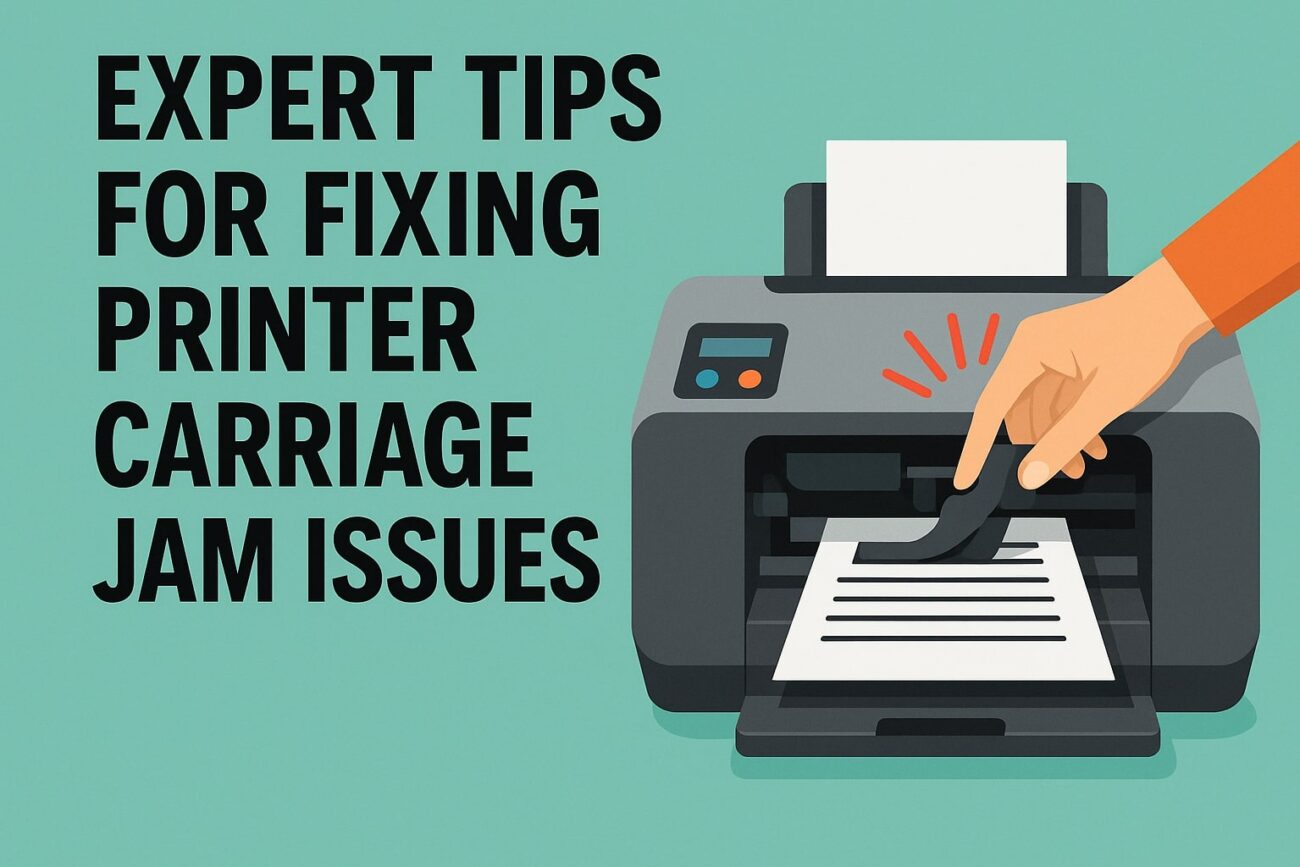A Printer Carriage Jam can be one of the most frustrating problems for anyone who relies on their printer regularly. This issue occurs when the printer’s carriage—the mechanism that moves the ink or toner across the paper—gets stuck, preventing printing from continuing. Carriage jams can happen due to a variety of reasons, including paper misalignment, worn-out rollers, or debris inside the printer. Understanding the causes and applying practical solutions can save both time and money while keeping your printer in optimal condition.
Understanding Printer Carriage Jam
Before attempting any fixes, it’s essential to understand why a printer carriage jam occurs. The printer carriage is responsible for moving the printhead smoothly across the page. If something obstructs its path or the internal mechanisms are not properly aligned, a jam can occur. Common signs include the printer displaying error messages, unusual noises, or the carriage being stuck in one position. Identifying these symptoms early can help prevent further damage to the printer.
Common Causes of Printer Carriage Jams
1. Paper Misalignment
One of the leading causes of carriage jams is improperly loaded paper. If sheets are not aligned correctly or are of uneven sizes, the carriage may struggle to move past the paper, causing a jam. Always make sure the paper is stacked neatly and fits within the paper tray guides.
2. Debris or Foreign Objects
Small debris, such as paper scraps, dust, or even staples, can block the carriage’s path. Over time, printers can accumulate particles that interfere with smooth operation. Inspecting the printer regularly and cleaning the interior can prevent jams caused by foreign objects.
3. Worn-Out Rollers
The rollers that feed paper into the printer can wear down or become coated with dust and grime. When rollers fail to grip the paper correctly, it can slip or jam, indirectly causing the carriage to stall. Cleaning or replacing worn rollers is a proactive way to maintain your printer.
4. Misaligned Carriage
Sometimes, the carriage itself may become misaligned due to frequent use or mechanical issues. If it’s not correctly seated on its track, it can jam or move irregularly. Checking the carriage alignment periodically can prevent such problems.
5. Software or Firmware Issues
While less common, software glitches or outdated printer firmware can also trigger carriage errors. Modern printers rely on precise instructions to control the printhead, and any inconsistencies in software can result in jams. Keeping your printer’s firmware up-to-date helps avoid this issue.
DIY Tips to Fix Printer Carriage Jam
Step 1: Turn Off and Unplug the Printer
Safety first! Always turn off the printer and unplug it before attempting any manual intervention. This prevents electrical hazards and ensures that the printer components are not moving while you inspect them.
Step 2: Remove the Paper
Check for any stuck or misfed paper in the tray or near the carriage path. Gently pull out any jammed sheets, making sure not to tear them, as leftover scraps can worsen the problem.
Step 3: Inspect the Carriage Path
Open the printer’s top cover to access the carriage. Check for any obstacles, loose parts, or foreign objects blocking its movement. Carefully remove debris with a soft brush or compressed air.
Step 4: Check Rollers and Belts
Inspect the rollers for wear or dirt. Clean them with a lint-free cloth lightly moistened with water. Ensure that belts guiding the carriage are tight and intact. Misaligned or broken belts should be replaced according to the printer manufacturer’s instructions.
Step 5: Reposition the Carriage
If the carriage appears misaligned, gently move it to its default position. Many printers allow manual carriage movement when powered off. Aligning it correctly ensures smooth operation once the printer is turned back on.
Step 6: Update Firmware
If the physical inspection doesn’t resolve the issue, check for firmware updates on the manufacturer’s website. Updating the printer’s software can fix known bugs that sometimes lead to carriage jams.
Step 7: Test the Printer
After performing the above steps, plug in and turn on the printer. Run a test print to see if the carriage moves smoothly. If problems persist, the printer may require professional servicing.
Preventing Future Printer Carriage Jams
Prevention is always better than cure. Implementing a few simple habits can significantly reduce the chances of encountering a carriage jam.
-
Use Quality Paper: Low-quality or damp paper increases the likelihood of jams. Choose good-quality paper recommended by your printer manufacturer.
-
Regular Cleaning: Dust and paper debris can accumulate inside the printer. Clean the interior and rollers regularly to maintain optimal function.
-
Proper Paper Loading: Always align paper properly in the tray, avoiding overloading, which can strain the rollers.
-
Handle Printer Carefully: Avoid forceful printing actions and handle the carriage gently during maintenance.
-
Keep Firmware Updated: Regularly check for firmware updates to ensure smooth communication between your computer and printer.
When to Seek Professional Help
Sometimes, despite best efforts, a carriage jam may persist. If repeated jams occur, it could indicate a more severe mechanical or electronic issue. Attempting repairs beyond basic cleaning and alignment can void the warranty or damage the printer further. In such cases, contacting a professional or the Printer Customer Service team ensures safe and effective resolution.
Conclusion
A Printer Carriage Jam can disrupt workflow, but with the right knowledge and preventive measures, it is manageable. Understanding the causes, following DIY fixes, and maintaining regular printer care can significantly reduce the occurrence of jams. For persistent issues or complex mechanical problems, seeking expert assistance from Printer Customer Service is the safest route. By taking these steps, you can keep your printer running smoothly and extend its lifespan, ensuring efficient and uninterrupted printing.
